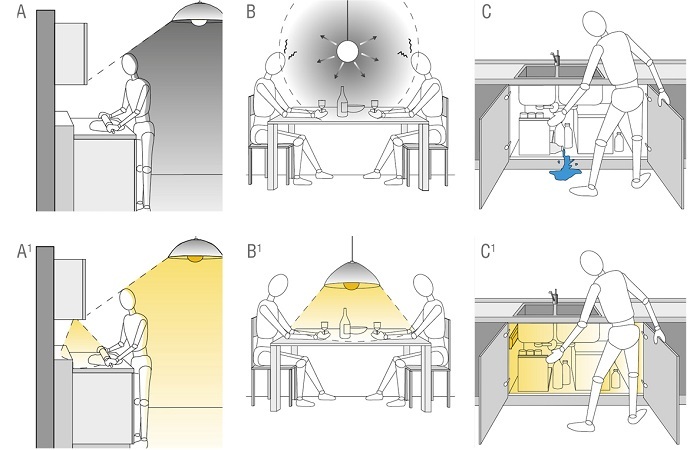
- Amplifier devices and their power
- Frequency range
- Classification
- Amplifier types
Quite convenient when your favorite music is at hand. Vehicles have long ceased to be exceptions. But will there be enough for the car enthusiast of the stock audio system? Factory outfits will not be able to give the proper effect. To please yourself with a pleasant and high-quality sound, it is worthwhile to acquire acoustics in a more modern way. This article will help you figure out how to choose an amplifier for power columns and other technical criteria.
to the contents ↑Amplifier devices and their power
Let's talk in more detail about the devices themselves, because there are dozens of trifles that you need to know and understand them. It starts with the device itself and its types, in order to understand how to choose an amplifier for speakers and not to be mistaken.
The choice of an amplifier for power columns is one of the main principles of choice. In order to avoid mistakes, it is necessary to familiarize yourself with several main opinions:
- The power of the amplifying device is less than the power of the roll.
- These parameters are equal for both devices.
- The amplifier has power values higher.
Who is right? To whom should I listen? Let's look at each situation in detail.

First case of
First you need to know the value of the rated power. Columns should work properly on this value without problems. At the amplifier, the maximum power must take such values that distortion levels are acceptable.
There are rules for both speakers and amplifying devices. Columns are very disliked by any mechanical and thermal influences. The mobile system can fail if the mechanical action is high. We need to avoid such a scenario, accurately picking up the value that characterizes the maximum move of the cone.
Important! Twenty percent is the maximum allowable value for this case.
But the thermal effects will manifest themselves in the overheating of the speaker system. They can be caused for the following reasons:
- Clipping is a shortage of power values of the device. In other words, the amplifier will give out a lot of high frequencies, if you decide to add loudness. You will not notice how the voice coil will rapidly fail, having experienced the influence of a huge temperature.
- Coil turns can jump out of the working gap and all the energy of the amplifying device will go to its heating. If you do not pay attention to it in time, you can pay dearly.
Important! Try to avoid listening to tracks with very low frequencies. Love for such compositions can play a cruel joke with a shift, even if the power is extremely low.
The second case of
Experienced motorists do not see any prospects for such a case. The nominal power is selected to match the supply voltage of approximately 14.4 V.
Important! In reality, to maintain such a voltage at the ends of the output of the device will not work. The amplifying device will immediately feel the effects of clipping, and the voice coil will be in danger.

The third case of
Choosing an amplifier for power columns is a pretty delicate task. There is a technique with indicators of two or even three times as large. Are mechanical damage dangerous under these conditions? To be afraid it is necessary only in the event that you have a firm intention to make fun of the speakers. But to do so no one will. It's enough just to avoid the maximum levels of amplification and not listen to those tracks that are "crammed" with low frequencies in abundance.
Important! The verdict is this: security is a rather subjective phenomenon, and the main criterion of success is the presence of the head without shoulders. But if you analyze the statistics, it is obvious that the third case is the most convenient and least dangerous for your speaker system.
to Contents ↑Frequency Range
How to choose an amplifier for speakers, knowing the frequency range of the device? It's no secret that frequency is responsible for the spread. The most common values range from 15 to 350 Hertz.
Important! Do not believe the manufacturers who point out the packaging to the sky-high values, otherwise - you risk getting caught in the usual marketing ploy.
to the contents ↑Classification of
If you understand the frequency and power, you can familiarize yourself with the classes of amplifying devices. All known amplifiers can be divided into two types:
- Analog. Such devices have excellent quality, but low efficiency.
- Digital. Such devices have worse quality, but can boast a high efficiency.
Which class should I choose? It all depends on your individual preferences and available funds.
to the contents ↑Types of amplifiers
It is worthwhile to focus on the types of amplifiers:
- Monoblocks. Coped with a resistance load within a pair of Ohms. Monoblocks - is the choice of owners of audio systems, the power of which serves as the main indicator.
- Two-channel. The technique is designed for 4-8 ohms. It is connected by means of coils or a bridge circuit.
- Three-channel. These devices have lost their former relevance, so there is no point in considering them.
- Four-channel. The most popular audio systems work with such amplifiers. Good reputation is supported by good sound quality.
- Five-channel. The low price and the same small dimensions are the indisputable advantage of such devices. .
- Six-channel. Rarely used in practice because of its uselessness.
Choosing an amplifier for power columns and other parameters will not cause you any more questions. Trust only proven manufacturers and do not be lazy to double-check the technical values of the device. Have a nice listening!


